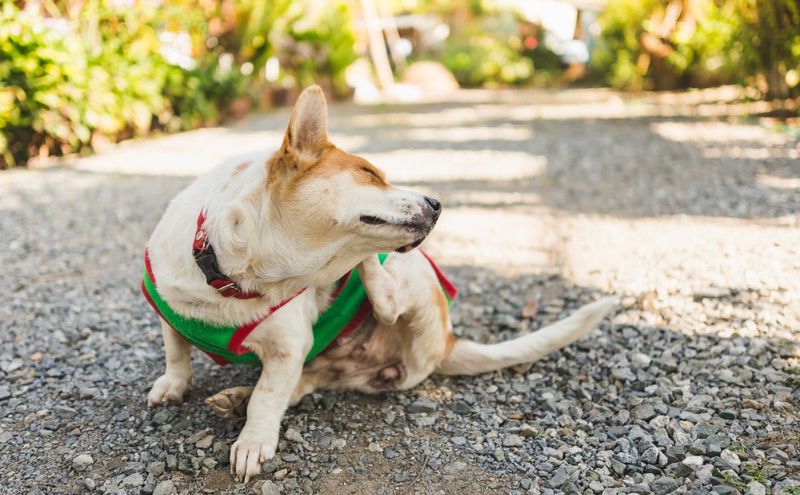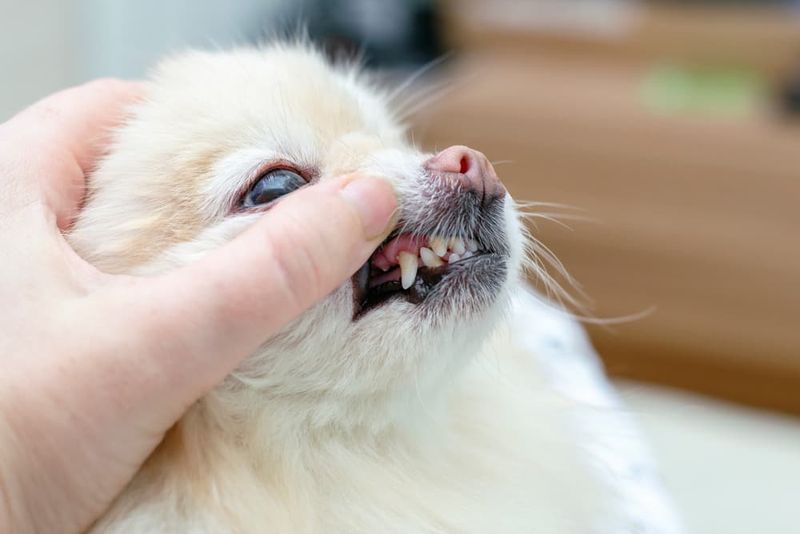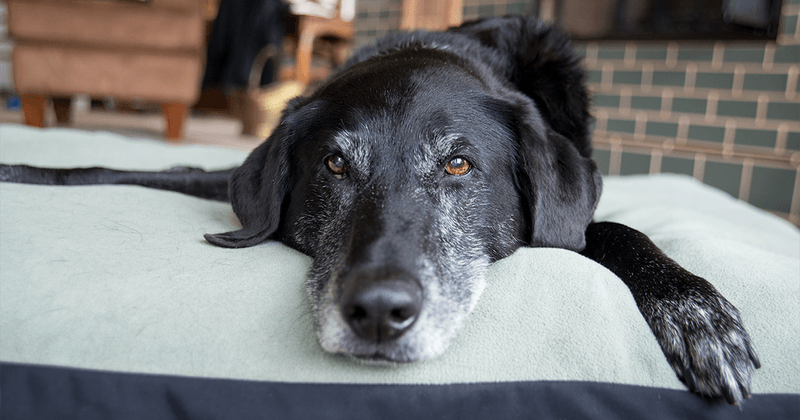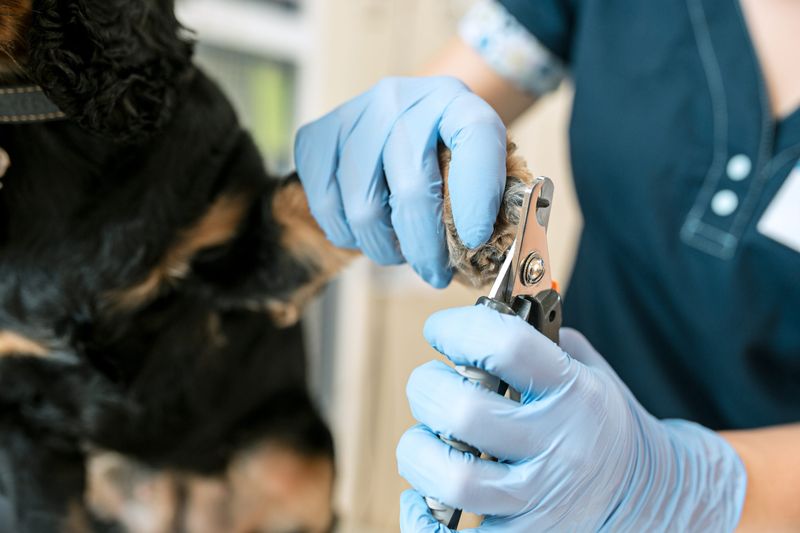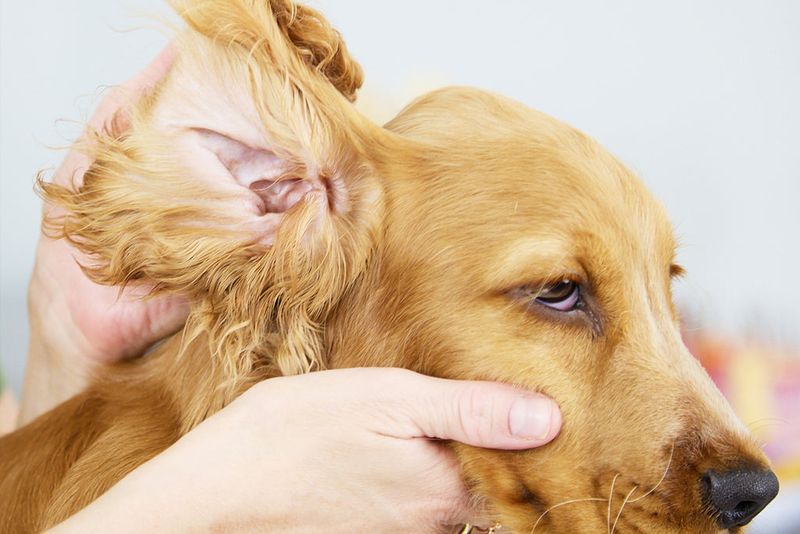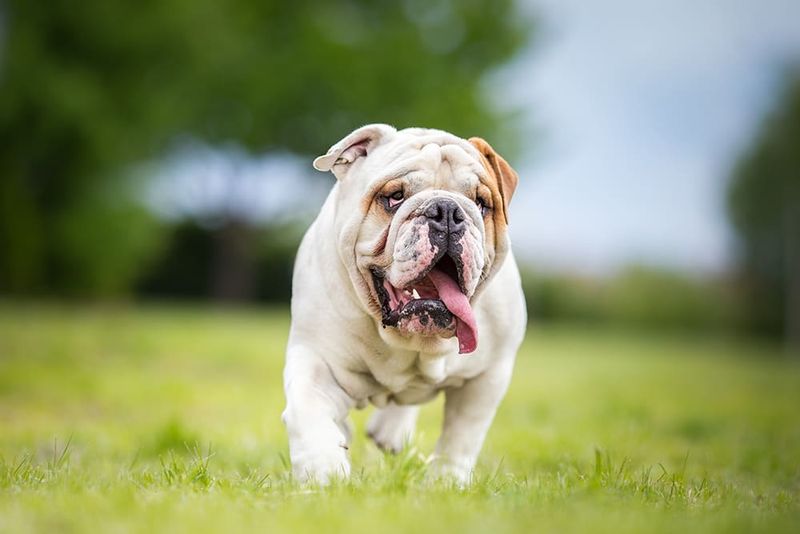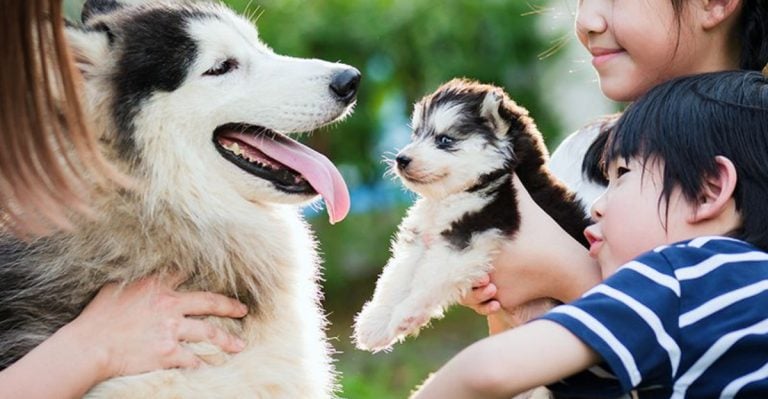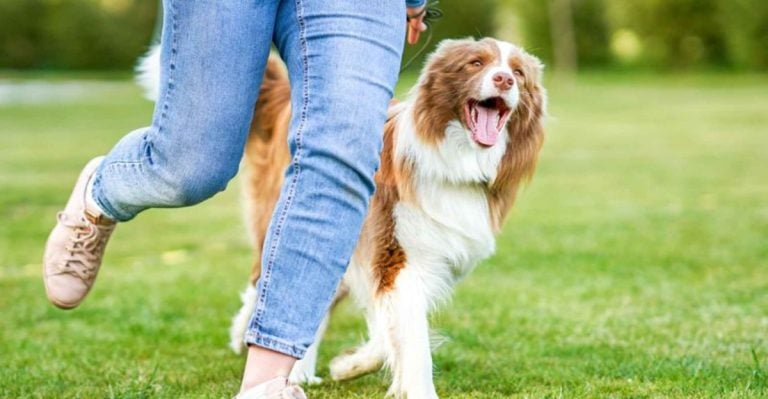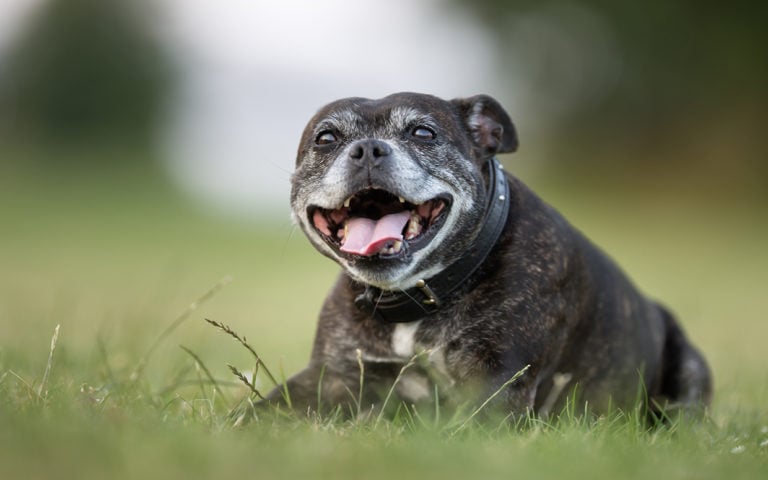12 Ways Your Dog Is Secretly Telling You Something’s Wrong
Our furry friends can’t talk, but they sure know how to communicate when something’s not right. Dogs have their own special ways of letting us know they’re feeling sick, scared, or uncomfortable.
Learning to spot these silent signals can help you catch problems early and keep your four-legged buddy happy and healthy.
1. Constant Scratching or Chewing
Dogs who can’t stop scratching or chewing their skin are waving a red flag. This behavior often points to allergies, fleas, or skin infections that are making your pup miserable.
The discomfort can be intense – imagine having an itch you just can’t satisfy! Check for redness, bumps, or flaky patches under their fur where they’re focusing their attention.
A vet visit might be needed for proper diagnosis and treatment. Sometimes a simple diet change or medication can provide quick relief and stop the scratching cycle before it leads to open wounds or infections.
2. Dull or Flaky Coat
A healthy dog’s coat should shine like they’ve just stepped out of a fancy grooming salon. When that natural luster disappears or flakes appear, your dog’s body is sending an SOS.
Poor nutrition often shows up first in the coat, as vital nutrients aren’t reaching the skin and hair follicles. Hormonal imbalances, allergies, and parasites can also rob your dog’s coat of its healthy appearance.
Don’t ignore this warning sign! Consider upgrading their food quality or adding omega fatty acid supplements after consulting with your vet. Sometimes that dull coat is the first hint of a more serious underlying condition.
3. Bad Breath or Red Gums
Puppy kisses shouldn’t clear a room! While dog breath isn’t meant to smell like mint, truly foul odors signal dental problems or possibly internal issues. The stink usually comes from bacteria buildup on teeth and gums.
Take a peek inside your dog’s mouth. Healthy gums should be pink, not angry red or ghostly pale. Swollen, bleeding gums or yellow-brown tartar buildup needs veterinary attention right away.
Dental disease isn’t just about bad breath—it can lead to painful infections, tooth loss, and even heart or kidney problems if bacteria enter the bloodstream. Regular brushing and dental checkups can prevent many of these serious complications.
4. Sudden Weight Loss or Gain
When your dog’s waistline changes dramatically without changes in their food or exercise, something’s up. Unexplained weight loss could signal digestive problems, parasites, or more serious conditions like diabetes or cancer.
On the flip side, sudden weight gain might indicate hormonal issues like hypothyroidism or Cushing’s disease. Water retention can also make your pup look puffy almost overnight.
Keep track of your dog’s weight with regular weigh-ins. A good rule of thumb: any change of more than 10% of body weight deserves a vet visit. Early detection of weight changes can lead to simpler, more effective treatments for whatever’s causing the problem.
5. Low Energy or Lethargy
Remember how your pup used to race around the yard or bounce off the walls when you grabbed the leash? When that enthusiasm disappears, pay attention. Dogs naturally slow down as they age, but sudden energy drops aren’t normal at any age.
Lethargy can stem from pain, infection, anemia, heart problems, or countless other issues. Your once-playful pooch might be conserving energy to fight illness or avoid movements that hurt.
Track your dog’s activity patterns—are they slower at certain times? After eating? During cold weather? These clues can help your vet pinpoint the cause and get your furry friend back to their tail-wagging self.
6. Frequent Accidents Indoors
When your house-trained dog suddenly starts leaving puddles and piles around the house, they’re not being spiteful—they’re sending distress signals. This behavior change often points to urinary tract infections, bladder stones, kidney disease, or digestive disorders.
Older dogs might develop incontinence due to weakening muscles or cognitive decline. Changes in urination patterns—like straining, frequent attempts, or unusual color—are particularly important warning signs.
Keep a log of when accidents happen and what they look like. This information helps veterinarians diagnose the problem faster. Quick treatment is essential, especially for urinary issues which can become dangerous if left unchecked.
7. Excessive Barking or Whining
That non-stop barking or pitiful whining might be more than just annoying—it could be your dog’s way of expressing pain or anxiety. Dogs often vocalize when something feels wrong and they need your help.
New or increased vocalization patterns might indicate discomfort from arthritis, ear infections, or abdominal pain. Mental distress from separation anxiety or fear can also trigger these sounds.
Pay attention to when the noise happens. Does your dog whine when climbing stairs or after eating? These contextual clues help identify the source of discomfort. Recording the sounds to play for your vet can also help them determine if the vocalization suggests a specific health issue.
8. Long or Overgrown Nails
Those clickety-clack sounds on your floor aren’t just annoying—they’re warning signs! Overgrown nails force dogs to walk abnormally, causing joint pain and posture problems over time.
Healthy dogs naturally wear down their nails through activity. When nails grow too long, it often means your dog isn’t getting enough exercise or is avoiding walking due to pain elsewhere in their body.
Examine your dog’s feet regularly. Nails should not touch the ground when standing. Severely overgrown nails can curl and grow into paw pads, creating painful wounds and infections. Regular trimming keeps your pup comfortable and provides an opportunity to check for other paw problems.
9. Matted Fur or Dirty Ears
Even the most independent dogs need help staying clean. Matted fur isn’t just unsightly—it pulls painfully on skin and creates perfect hiding spots for parasites and infections. Dogs who stop grooming themselves are often trying to avoid pain or simply don’t feel well enough to maintain their hygiene.
Ears tell a similar story. Healthy ears should look clean and pink inside, not red, swollen, or filled with dark discharge. Foul odors, head shaking, or ear scratching all point to potential ear infections.
Regular grooming sessions give you valuable time to check for these issues. When your normally clean pup suddenly develops matted fur or smelly ears, it’s time for a thorough health check.
10. Ignoring Commands or Sudden Disobedience
“My dog suddenly forgot all his training!” This common complaint often has nothing to do with stubbornness. When well-trained dogs start ignoring commands, hearing or vision problems might be developing.
Cognitive decline in senior dogs can manifest as confusion about previously known routines. Pain can also cause disobedience—a dog with hip pain might “refuse” to sit because it hurts, not because they’re being difficult.
Try giving commands in different ways. Does your dog respond better to hand signals than voice? Or vice versa? This testing can help determine if sensory issues are at play. Remember that behavior changes often have physical causes worth investigating before assuming it’s just bad behavior.
11. Excessive Panting or Drooling
Dogs naturally pant to cool down, but panting when they’re not hot or active is a red flag. Excessive panting can signal pain, heart problems, respiratory issues, or anxiety. The pattern matters—sudden heavy panting in a calm environment deserves immediate attention.
Similarly, while some breeds drool more than others, a sudden increase in drooling might indicate dental problems, nausea, or something stuck in the mouth. Thick, ropey drool or drool with blood requires urgent care.
Monitor these symptoms alongside other behaviors. Is your dog also restless or lethargic? Are they eating normally? These additional clues help determine whether you’re facing an emergency or a less urgent health concern.
12. Not Enjoying Play or Walks
Remember how your dog used to bounce with excitement at the sight of a leash or favorite toy? When that joy disappears, your pup is waving a major warning flag. Dogs rarely choose to miss out on fun unless something’s wrong.
Reluctance to play often stems from pain—arthritis, muscle strains, or internal discomfort. Sometimes the problem is less obvious, like declining vision making fetch too difficult, or heart issues limiting stamina during walks.
Start by ruling out simple explanations like hot weather or aging. Then watch for patterns: Does your dog avoid jumping? Struggle with stairs? Limp after activity? These specific observations help veterinarians pinpoint the source of discomfort.

